How to Prepare a Balance Sheet: 5 Steps
If you were to take a clipboard and record everything you found in a company, you would end up with a list that looks remarkably like the left side of the balance sheet. Long-term assets (or non-current assets), on the other hand, are things you don’t plan to convert to cash within a year. Non-current assets are assets that are not turned into cash easily, are expected to be turned into cash within a year, and/or have a lifespan of more than a year.
Regardless of the size of a company or industry in which it operates, there are many benefits of reading, analyzing, and understanding its balance sheet. Retained earnings are the net earnings a company either reinvests in the business or uses to pay off debt. The remaining amount is distributed to shareholders in the form of dividends. Let’s look at each of the balance sheet accounts and how they are reported. Similar to the order in which assets are displayed, liabilities are listed in terms of how near-term the cash outflow date is, i.e. liabilities coming due sooner are listed at the top. Any amount remaining (or exceeding) is added to (deducted from) retained earnings.
This insight is invaluable for managing day-to-day operations and planning for future growth. For instance, if a company’s inventory levels have been consistently rising in recent quarters, it might indicate potential issues with sales or supply chain management. On the other hand, a declining trend in debt levels could signal improved financial stability.
Preferred stock is assigned an arbitrary par value (as is common stock, in some cases) that has no bearing on the market value of the shares. The common stock and preferred stock accounts are calculated by multiplying the par value by the number of shares issued. The balance sheet provides an overview of the state of a company’s finances at a moment in time. It cannot give a sense of the trends playing out over a longer period on its own. For this reason, the balance sheet should be compared with those of previous periods. In both formats, assets are categorized into current and long-term assets.
- Companies usually prepare one at the end of a reporting period, such as a month, quarter, or year.
- After enrolling in a program, you may request a withdrawal with refund (minus a $100 nonrefundable enrollment fee) up until 24 hours after the start of your program.
- Lastly, inventory represents the company’s raw materials, work-in-progress goods, and finished goods.
- Your balance sheet shows what your business owns (assets), what it owes (liabilities), and what money is left over for the owners (owner’s equity).
Balance sheet (also known as the statement of financial position) is a financial statement that shows the assets, liabilities and owner’s equity of a business at a particular date. The main purpose of preparing a balance sheet is to disclose the financial position of a business enterprise at a given date. While the balance sheet can be prepared at any time, it is mostly prepared at the end of the accounting period. Balance sheets give an at-a-glance view of the assets and liabilities of the company and how they relate to one another. Fundamental analysis using financial ratios is also an important set of tools that draw their data directly from the balance sheet. The balance sheet is an essential financial statement that provides a concise overview of a company’s financial position.
Balance sheets are important financial statements that provide insights into the assets, liabilities, and shareholders’ equity of a company. All assets that are not listed as current assets, are grouped as non-current assets. A common characteristic of such assets is that they continue providing benefit for a long period of time – usually more than one year. Examples of such assets include long-term investments, equipment, plant and machinery, land and buildings, and intangible assets. A balance sheet provides a snapshot of a company’s financial performance at a given point in time.
This is matched on the liabilities side by $55.2 billion in accounts payable, likely money owed to the vendors and suppliers of many of those goods. This means that assets, or the means used to operate the company, are balanced by a company’s financial obligations, along with the equity investment brought into the company and its retained earnings. Whether you’re a business owner, employee, or investor, understanding how to read and landscape invoice software understand the information in a balance sheet is an essential financial accounting skill to have. Cash flow statements track a company’s financial transactions, showcasing the flow of money in and out during a specific timeframe. These statements break down cash movements into investing, financing, and operating activities. The thing is, these intangible assets can hold significant value and contribute to a company’s overall worth.
Noncurrent Liabilities
You will need to tally up all your assets of the company on the balance sheet as of that date. In report format, the balance sheet elements are presented vertically i.e., assets section is presented at the top and liabilities and owners equity sections are presented below the assets section. When balance sheet is prepared, the current assets are listed first and non-current assets are listed later. As you can see from the balance sheet above, Walmart had a large cash position of $14.76 billion in 2022, and inventories valued at over $56.5 billion. This reflects the fact that Walmart is a big-box retailer with its many stores and online fulfillment centers stocked with thousands of items ready for sale.
Financial ratio analysis is the main technique to analyze the information contained within a balance sheet. Like assets, you need to identify your liabilities which will include both current and long-term liabilities. It is crucial to note that how a balance sheet is formatted differs depending on where the company or organization is based.
Current assets include cash and all assets that can be converted into cash or are expected to be consumed within a short period of time – usually one year. Examples of current assets include cash, cash equivalents, accounts receivables, prepaid expenses or advance payments, short-term investments and inventories. A balance sheet, along with the income and cash flow statement, is an important tool for investors to gain insight into a company and its operations. It is a snapshot at a single point in time of the company’s accounts—covering its assets, liabilities, and shareholders’ equity.
Report Format Balance Sheet
That is, assets are on the left; liabilities and stockholders’ equity are on the right. Whatever a business owns — its assets — have been financed by either taking on debt (liabilities), or through investments from the owner or shareholders (equity). If you’ve found that your balance sheet doesn’t balance, there’s likely a problem with some of the accounting data you’ve relied on. Double check that all of your entries are, in fact, correct and accurate. You may have omitted or duplicated assets, liabilities, or equity, or miscalculated your totals.
Everything You Need To Master Financial Modeling
If the company wanted to, it could pay out all of that money to its shareholders through dividends. Shareholders’ equity reflects how much a company has left after paying its liabilities. Assets are anything the company owns that holds some quantifiable value, which means that they could be liquidated and turned into cash. Balance sheets are useful tools for individual and institutional investors, as well as key stakeholders within an organization, as they show the general financial status of the company. A balance sheet must always balance; therefore, this equation should always be true. Equity can also drop when an owner draws money out of the company to pay themself, or when a corporation issues dividends to shareholders.
The balance sheet is basically a report version of the accounting equation also called the balance sheet equation where assets always equation liabilities plus shareholder’s equity. Designed with secondary or investment properties in mind, this comprehensive balance sheet template allows you to factor in all details relating to your investment property’s growth in value. You can easily factor in property costs, expenses, rental and taxable income, selling costs, and capital gains. Also factor in assumptions, such as years you plan to stay invested in the property, and actual or projected value increase. You can also edit the template to include whatever details you need to provide for renting, refinancing, home-equity lines, and possible eventual sale of your investment property. Investors and lenders also use it to assess creditworthiness and the availability of assets for collateral.
Why Is a Balance Sheet Important?
This is consistent with the balance sheet definition that states the report should record actual events rather than speculative numbers. Additionally, balance sheet templates allow you to enter projected figures so that you can compare your current financial standing with your projected or target finances. For example, you can use a balance sheet to determine what your quarterly figures must be in order to beat your previous year’s profits. Balance sheet templates, such as this Investment Property Balance Sheet, allow you to factor in details such as property costs, expenses, rental and taxable income, selling costs, and capital gains. Track your quarterly financial position by entering each month’s assets and liabilities and reviewing the monthly and quarterly perspectives of your owner’s equity.
This means that the assets of a company should equal its liabilities plus any shareholders’ equity that has been issued. Measuring a company’s net worth, a balance sheet shows what a company owns and how these assets are financed, either through debt or equity. Investors, business owners, and accountants can use this information to give a book value to the business, but it can be used for so much more. Long-term liabilities are debts and other non-debt financial obligations, which are due after a period of at least one year from the date of the balance sheet. For instance, a company may issue bonds that mature in several years’ time.
Balance sheets, like all financial statements, will have minor differences between organizations and industries. However, there are several “buckets” and line items that are almost always https://www.wave-accounting.net/ included in common balance sheets. We briefly go through commonly found line items under Current Assets, Long-Term Assets, Current Liabilities, Long-term Liabilities, and Equity.
If it’s publicly held, this calculation may become more complicated depending on the various types of stock issued. Last, a balance sheet is subject to several areas of professional judgement that may materially impact the report. For example, accounts receivable must be continually assessed for impairment and adjusted to reflect potential uncollectible accounts.




